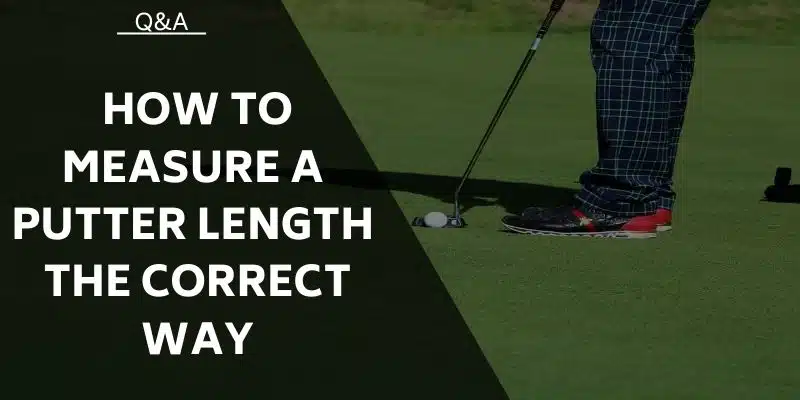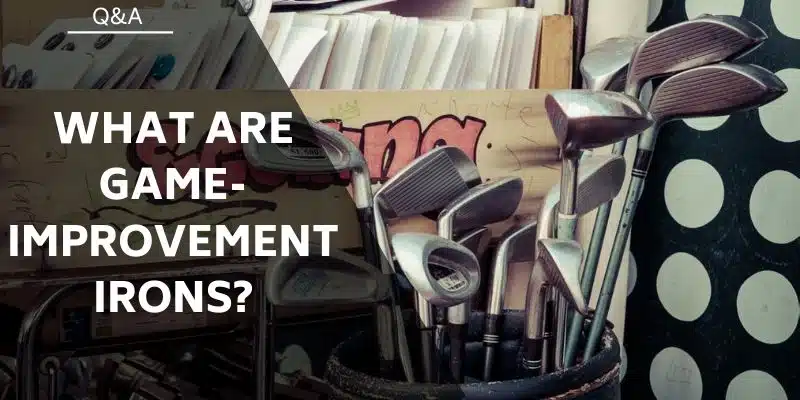Almost all major golf brands manufacture and sell their own unique golf ball. With all the options out there, some natural questions come up. Are all golf balls the same size?
Were golf balls always made the same size, or has it changed throughout history? When you finish reading this, you will know everything about golf ball size you ever wanted to know!
Are all Golf Balls the Same Size?
Yes and No.
Do you have a bucket of golf balls in your garage with a few prized possessions from the eighties? If you do, you may have several different size golf balls in that bucket.
What is the standard Golf ball size?
In today’s golf world, there is only one standard size golf ball that is legal in tournament play and authorized to sell in golf shops. The standard size golf ball today is 1.68 inches, but before the nineteen eighties, the minimum size was 1.62 inches.
As an average golfer holding these two golf balls in your hand, it would have been pretty tricky to tell the difference.
Current Rules on Golf Ball Size?
It took until 1990 for the USGA and the R & A to agree on a standard golf ball size for all players. Since 1990 the regulations that were put into place have not changed.
Before the agreement, the USGA had a minimum size of 1.68 inches, and the R & A had a minimum size of 1.62 inches. Indeed, the minimum size has to do with the concept that a smaller ball would theoretically be easier to fit into the hole.
Today’s golf ball size restrictions are as follows.
- Golf Ball Diameter – Not Less Than 1.68 Inches
- Golf Ball Mass – Not More Than 1.620 oz
- There are also specific restrictions on velocity, symmetry, and distance
What about the British Open when the Golf Ball Rules were Different?
The British Open has been one of the most famous and celebrated Major Championships for over one hundred and fifty years. The British Open Championship is the oldest golf tournament in the world.
Affectionately called “The Open,” it is a time for American golfers to test their strengths when it comes to Links style courses, harsh weather conditions, and gnarly rough.
In the ’80s, when the R & A was allowing players to use a smaller golf ball, the Americans were entitled to use this ball at the Open Championship. Interestingly the greats like Arnold Palmer and Jack Nicklaus jumped at the chance to use a smaller ball. The Tour players referred to it as the “small ball” or “British ball.”
Tom Watson won the British Open three times in the 1980s, I can’t help but wonder which size golf ball he may have been using!
What is the Difference Between a 2 Piece, 3 Piece, and Multi-Layer Golf Ball? Does this affect size?
The terms two-piece, three-piece, and multi-layer have almost become marketing lingo for golf ball manufacturers. As a consumer, it’s essential to know what these things mean and how they can help or hurt your game.
Two-Piece Golf Ball
A two-piece golf ball is made up exactly like it says. It has a small core and a shell around it, two pieces. These golf balls are sturdy, fly straighter, and spin less. The two-piece ball is designed for a higher handicap or beginner golfer looking for distance as opposed to feeling.
The Two-Piece ball will not have the best feel on or around the greens, and that is typically why better players opt to leave the two-piece ball on the shelf. From an economic perspective, the two-piece ball will usually be the cheapest option available.
Three-Piece Golf Ball
The three-piece ball is your middle of the road option. They will feel a little better than the two-piece yet still offer plenty of distance. They will spin a bit more than the two-piece but not as much as the multi-layer ball.
If you are a mid handicap player looking for distance but also wanting to make sure the ball doesn’t feel like a rock when you putt it, the three-piece ball can be a great option. Although the three-piece ball will be a bit more expensive than the two-piece, the difference in price will be worth it for the performance you get out of it.
Read more: Best Distance Golf Balls
Multi-Layer Golf Ball
These are the fancy expensive ones. These are the golf balls that leave people lying on their stomachs arm outstretched with a ball retriever fishing for that ball back. Lose a few of these in around, and it will cost you almost as much as the round did.
Why Are They So Much More Expensive?
These golf balls are typically four or five pieces and have a urethane cover. The way they are designed helps them to feel much softer around the greens and create high levels of spin. If you want to stop a ball on a green and spin it backward, this is the ball for you. The covers are softer than the two or three-piece models so these balls do tend to cut easily.
Regardless of the type of golf ball you are playing; the size is not affected. All manufacturers must adhere to the strict guidelines enforced by the USGA.
Conclusion
With all the things that golfers need to worry about, luckily, golf ball size is not one of them. There is no way to purchase a golf ball from a local golf shop or large warehouse store that doesn’t conform. Even when a new ball is released claiming to be longer and softer than all the other golf balls out there, it will have undergone rigorous testing to make sure it is suited for play under the rules of golf.
Truly the most interesting thing about golf ball size is if the smaller ball made a difference in scoring? With the recent push to make golf holes larger and the game more fun for people of all levels, what are your thoughts? Do you think golf ball size should be smaller than it is?
Related Articles
- What Do The Numbers on Golf Balls Mean
- The Best Amateur Golf Balls
- How Often Should You Change Golf Balls
- Best Club To Chip With Around The Green
- Best Titleist Golf Balls
Nick is the founder of GolfSpan and an avid golfer. He's not quite a pro but has over 15 years of experience playing and coaching golfers worldwide. His mission is to bring the golfing community a better experience when it comes to choosing the right golf gear and finding the right setup for your game.








